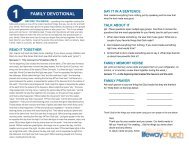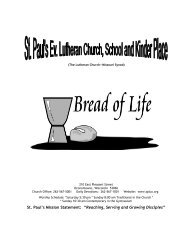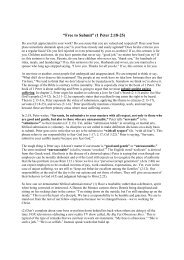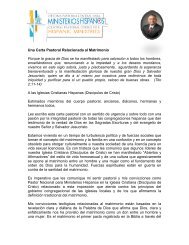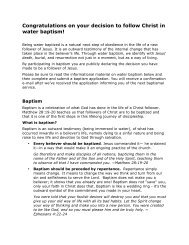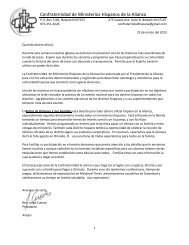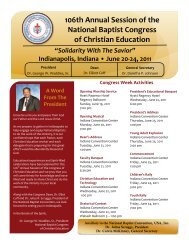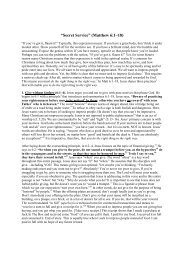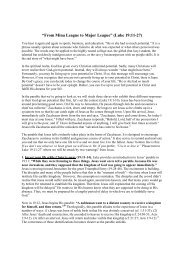A Proposal to Reduce Unnecessary Divorce - Razorplanet
A Proposal to Reduce Unnecessary Divorce - Razorplanet
A Proposal to Reduce Unnecessary Divorce - Razorplanet
You also want an ePaper? Increase the reach of your titles
YUMPU automatically turns print PDFs into web optimized ePapers that Google loves.
FOR THE PAST FORTY YEARS, law and judicial policy on divorce have been crafted<br />
with the assumption that once couples file for divorce, the marriage is over<br />
and the only realistic goal is a fair, constructive divorce. Conversations with<br />
judges and divorce at<strong>to</strong>rneys about the <strong>to</strong>pic of marital reconciliation are often<br />
met with some version of the following: “It’s not our job <strong>to</strong> be marriage counselors,<br />
and by the time people get <strong>to</strong> us they want help with getting a divorce,<br />
not with saving their marriage.”<br />
It was not always this way. In the 1960s, many family court professionals saw<br />
their first goal as helping couples reconcile if possible, and then, if this was not<br />
possible, helping them have a constructive divorce. This dual focus is documented<br />
in the his<strong>to</strong>ry of the Association of Family and Conciliation Courts, the leading<br />
professional organization for divorce professionals, and in landmark works<br />
such as Therapeutic Family Law: A Complete Guide <strong>to</strong> Marital Reconciliations. 12<br />
The assumption in the field at that time was that many couples filing for divorce<br />
could be helped <strong>to</strong> reconcile by teams of legal and mental health professionals.<br />
Even if they were not successful, it was worth the effort by the courts.<br />
This “reconciliation first” approach was short-lived. A headline in the his<strong>to</strong>ry<br />
section on the Association of Family and Conciliation Court’s website describes<br />
the shift this way: “The 1970s: From Reconciliation <strong>to</strong> <strong>Divorce</strong> with Dignity.”<br />
Marital reconciliation was quietly dropped from the organization’s mission<br />
statement as court professionals turned their full attention <strong>to</strong> “helping couples<br />
end their marriages with a greater sense of dignity and self-worth and<br />
with less trauma <strong>to</strong> themselves and their children.” 13 By the 1980s and 1990s,<br />
mediation and other forms of collaborative practice replaced marriage counseling<br />
in professionals’ work with divorcing couples. No one denied the possibility<br />
that marital reconciliation could occur as a result of a good, collaborative<br />
divorce process, but res<strong>to</strong>ring the marital relationship was no longer an intentional<br />
focus of divorce practice in the United States. 14<br />
However, neither the early enthusiasm for reconciliation services nor the later<br />
abandonment of these services was informed by actual research on divorcing<br />
couples. Prior <strong>to</strong> new research that will be shared in this report, no studies<br />
asked divorcing people if they would be interested in exploring marital reconciliation<br />
with professional help. The study cited below came out of the practical<br />
experience of Judge Bruce Peterson of Hennepin County, Minnesota. His meetings<br />
with divorcing couples convinced him that at least some couples would<br />
15



